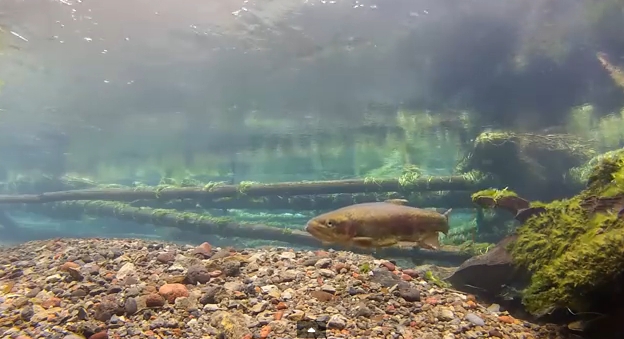 |
 |
 |
 |
 |
 |
|
Home page About us Instruction Guiding Locations map Gift vouchers Prices Articles Contact us Accommodation Links |
| Recent research may increase our understanding of
why trout take an artificial fly
How does a trout recognize and intercept a fly drifting towards it on the surface of the water? We know a lot about trout vision which helps to explain how a trout intercepts a fly, but less about how food is recognised as edible. Trout are faced with a constant stream of inedible debris. Obviously fish can usually distinguish pretty well between edible and inedible objects. But how do they do it? Earlier this year John Simonson gave an example of
this gap in our knowledge about the visual capabilities of fish: He
wrote in his Fly Patterns For Trout blog: There's a scientific term for this human ability - 'parallel visual search'- that enabled John to spot and identify a range of insects at different stages in their lifecycles. Everybody uses parallel visual search in day-to-day activities; it enables us to quickly find our favourite brand on supermarket shelves, our car in a car park, a book on a bookshelf etc. It's an unconscious ability that we take for granted. Speed is one important characteristic of parallel visual search. We don't have to examine in turn each car, face or cereal packet, the object we're looking for seems to 'pop out' from the background. Until recently it was thought that only mammals and birds were capable of parallel visual search. But earlier this year scientists reported that fish shared this ability.  (Screenshot from Underwater camera flyfishing 2014 best fishing video winner) It is generally agreed by scientists studying 'visual search' that
It may be no accident that these are features reproduced in artificial trout flies. In addition, previous research has shown that "Your ability to find a target in the current search is affected by what you have been searching for previously. In general, you are faster searching for a given target if you found that same target on a recent trial" (see Further reading #2). In other words, if you are a trout feeding on a particular type of natural fly, you are more likely to quickly spot the next similar one that floats towards you. Could parallel visual search be an explanation for selective feeding?
|
|
Copyright
Paul Kenyon 2008-2016
If you like our website, please consider recommending it on Google +1
|